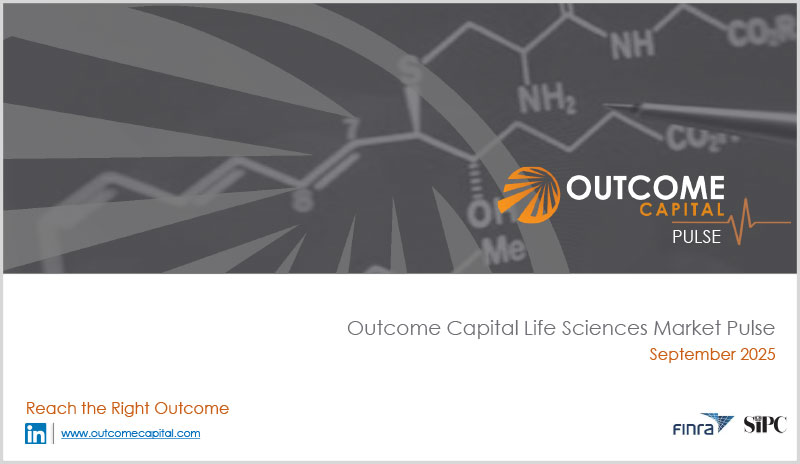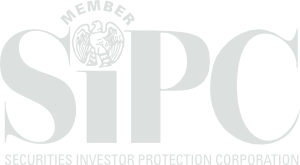Platforms versus Products in the Life Sciences Sector
In an expert view piece, Dr Oded Ben-Joseph and Dr Shawn Manning, from investment bank Outcome Capital, advise on how life sciences companies can curtail risk by allocating time and money in a capital-efficient manner.
Published in The Pharma Letter
Expert View by Dr. Oded Ben-Joseph and Dr. Shawn Manning
The concept of capital efficiency is central to the early development of life sciences companies and has been discussed at length elsewhere. Since the life sciences sector is capital-intensive, and time and money are finite, chief executives must allocate resources judiciously in a capital efficient manner. However, as a life sciences advisory firm, we often witness recurring weaknesses in management’s ability to communicate a clear path to technology monetization.
One common such weakness is often the failure of management teams to differentiate between the value of technology-derived marketable assets from the value of a pure platform technology. Many companies still view possession of a platform as a talisman that provides reassurance of ‘enabling technology’ and ‘underlying value.’ This belief stems from the platform’s origin in ‘big pharma,’ where the concept was historically deployed to increase discovery output and reduce the probability of clinical failure.
Platform concept seldom capital efficient
The adoption of ‘platforms’ by smaller players over the 1980s to early 2000s sought to mirror their perceived value, reassure investors and attract interest from larger companies. Typical examples included antibodies, gene silencing, and small molecules targeting specific receptor classes. However, the platform concept, with a few notable exceptions, was seldom capital efficient, requiring significant investment, if not in terms of creation, then in terms of maintenance and ongoing development to maintain a competitive edge.
Moreover, the discovery ‘engine’ had potential to (i) eat up capital that could be more usefully deployed in a targeted manner; (ii) obfuscate specific project costs, and even (iii) become the primary focus of investment in itself, prohibiting more agile product specific strategies.
Subsequently, although a few players got lucky in that acquirers were willing to gamble on approaches yet to yield marketable products, examples of platforms that have failed to offer a commercial return to shareholders litter the industry.
Such platforms were either too slow to generate marketable products, were succeeded by more advanced alternatives, or in some cases actually failed to generate sufficiently differentiated and efficacious products. In summary, the actual monetization of the platform in many cases represented an insurmountable hurdle.
Moving towards product-centric strategies
In contrast, a more rational and capital-efficient approach to drug development has moved away from platforms towards product-centric strategies where the relationship between time, capital deployment, and achievement of value-inflection or ‘de-risking’ milestones is more tangible, and operational agility is easier to achieve.
To this end, management should be able to provide a clear outline of the relationships between time, capital, and milestone, and how they intend to deploy capital to de-risk the technology. By milestones, we are referring to value-inflection or ‘de-risking’ milestones, as opposed to activity milestones. For example, completing data analysis of a Phase II or pivotal trial, obtaining Food and Drug Administration clearance or opening an exit window are true milestones.
By contrast, hiring key personnel or building a lab or a manufacturing facility, are not. By underestimating timelines and funding required to hit value-inflection milestones, companies routinely fall short and run out of cash. Therefore, we often recommend to chief executives to present, on one slide, the critical path to de-risk the company’s technology, and how much capital the company needs to achieve each milestone.
Pursuing multiple programs ‘best left to big pharma’
Milestones should correspond to, and focus on, the company’s critical path. In addition to the clear definition of de-risking milestones discussed above, management should have a clear grasp of what it would take to corroborate and de-risk the central investment thesis and what should be regarded as a ‘nice to have’ adjacency, not immediately essential for value creation.
For example, a company developing a new platform technology that can theoretically give rise to treatments of multiple indications may choose to pursue those indications in parallel. As discussed above, many chief executives are under the misconception that multiple shots on goal will serve to de-risk the technology and render the company more attractive to investors. In fact, the opposite is true. Pursuing multiple programs is a risky endeavor best left to big pharma. An early-stage company should curtail risk by focusing, for example, on obtaining early human feasibility data that will serve to validate the technology and increase the probability of additional financing or corporate relationships toward co-development with a strategic partner.
In conclusion, our recommendation is to focus on your lead product and allocate time and money in a capital-efficient manner toward that very product.
For more news and expert opinions on the pharma and biotech sector, see The Pharma Letter
News
Outcome Capital Launches Dedicated Healthcare Services Practice to Expand Strategic Advisory and Investment Banking Capabilities
BOSTON–(BUSINESS WIRE)–Outcome Capital, LLC, a highly specialized life sciences and healthcare advisory and investment banking firm, today announced the launch of its Healthcare Services Practice, expanding the firm’s strategic and transactional advisory capabilities to meet the needs of companies operating across the rapidly evolving healthcare services sector. “Establishing a dedicated Healthcare Services Practice allows us to […]
Read MoreResources

Outcome Capital Life Science Market Pulse, September 2025
Outcome Capital Life Science Market Pulse September 2025 Click to view our LifeSciences Pulse Newsletter
DownloadContact Us for More Information
Would you like to learn more about working with Outcome Capital or discuss your specific needs?


